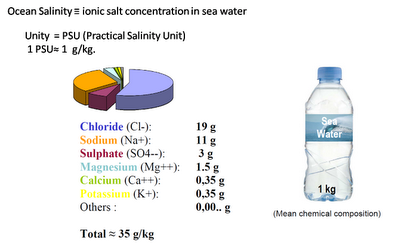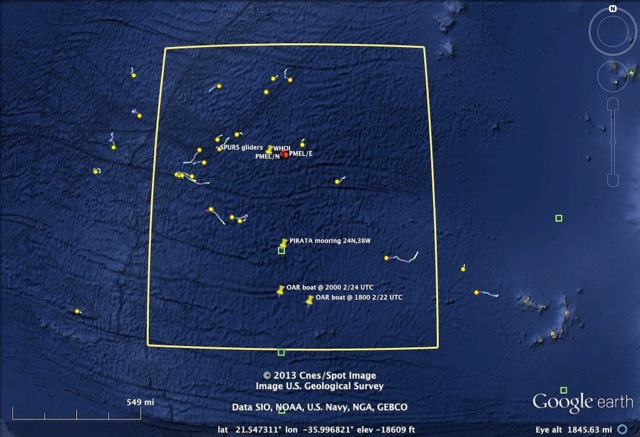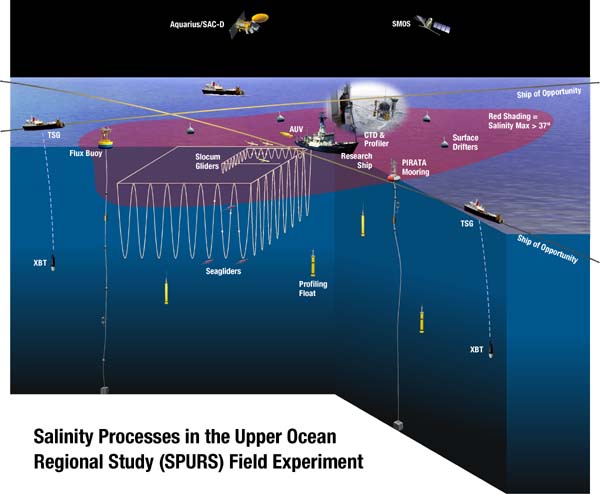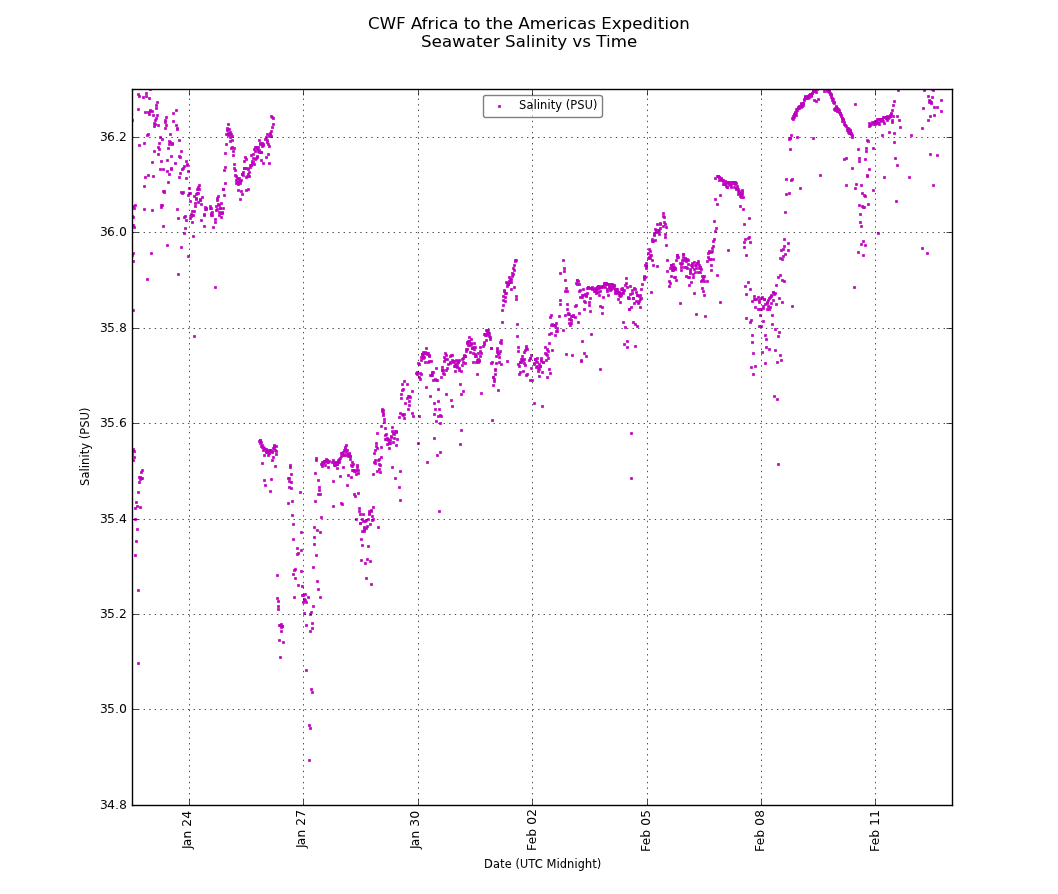Daily Update 3.2
Week 4: Module 3: Date 2/27/13
Yesterday we learned a bit about pH. Today we are going to learn a little about salinity, which is one of the other measurements that the JRH and its crew are taking. Salinity seems like a basic topic but in reality it is fairly complex. The basic definition of salinity is the concentration of salt in water. It is often measured in PSU (practical salinity units) and is roughly equal to parts/thousand, e.g. 1 PSU=1g of salt/1kg of seawater. Although it is called salinity it is much more than just salt. It is a measure of all the dissolved solids. It just happens that the two most common elements are chloride and sodium, which when combined create NaCl or table salt. The image below shows the average breakdown of sea water, which ranges from 33-37 PSU.
So why does salinity matter and what do the measurements indicate? The following excerpt is from the NASA site (http://www.nasa.gov/topics/earth/features/salinity-trip.html)
Oceanographers believe the ocean retains a better record of changes in precipitation than land, and translates these changes into variations in the salt concentration of its surface waters. Scientists studying the salinity records of the past 50 years say they already see the footprint of an increase in the speed of the water cycle. The places in the ocean where evaporation has increased and rain has become scarcer have turned saltier over time, while the spots that now receive more rain have become fresher. This acceleration ultimately may exacerbate droughts and floods around the planet. Some climate models, however, predict less dramatic changes in the global water cycle.
Currently NASA has a project called SPURS (Salinity Processes in the Upper Ocean Regional Study) which is exploring the salinity in the middle Atlantic in the same area where the JRH is rowing through. In the image below you can see the area NASA is investigating with the JRH showing up in the bottom of the image.
In the following image you can see how the SPURS experiment is gathering data. In the image you can see a ship of opportunity. A ship of opportunity can be any ocean going vessel that is amenable to having scientific equipment on board to collect samples. The JRH is considered a ship of opportunity and will be sharing data that they collect with NOAA and the SPURS project. NOAA often uses these ships to collect data throughout the oceans. The JRH is unique in this role due to the slow speed that they travel at. It allows them to sample much more frequently and with more instruments.
This is a image of a data plot from the JRH that shows the salinity measurements that they have taken.
The following sites have a wealth of information about salinity and the SPURS project:
http://www.nasa.gov/topics/earth/features/salinity-trip-briefing.html -this has a great slideshow about salinity http://spurs.jpl.nasa.gov/SPURS/index.jsp http://www.nasa.gov/topics/earth/features/salinity-trip.html http://oceanworld.tamu.edu/resources/ocng_textbook/chapter06/chapter06_01.htm – this has complex but great information on salinity, temperature and density and how they are related http://www.salinityremotesensing.ifremer.fr/sea-surface-salinity/definition-and-units

